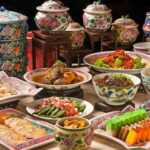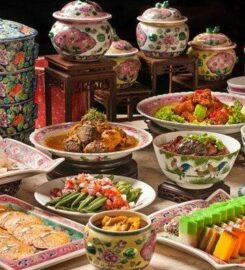
Lazat Cooking Classes
Culinary school in Malaysia
Nyonya Food
The Baba-Nyonyas adopted Malay customs and social practices while retaining Chinese traditions and religious beliefs, and over time, developed their own unique dialect, Baba Malay. But it’s their blend of Chinese and Malay cooking that remains the most significant legacy.
Their cuisine marries Chinese wok cooking styles with Malay ingredients and condiments, such as candlenut, Vietnamese coriander, and fermented shrimp paste, relying on sour sauces and coconut milk. Added to the mix are Indian and Middle Eastern spices, Javan vegetables such as buah keluak (black mangrove tree nuts), and ulam (a plant native to Asian wetlands), resulting in a truly distinctive cuisine that bursts with flavors. Nyonya cooking simultaneously tastes sweet, sour, salty and spicy.
Nyonya cooking is the result of blending Chinese ingredients with various distinct spices and cooking techniques used by the Malay/Indonesian community. This gives rise to Peranakan interpretations of Malay/Indonesian food that is similarly tangy, aromatic, spicy, and herbal.
Is Nyonya and Peranakan the same?
Peranakan is Malay for “born here”, which refers to the Straits-born people of Chinese and Malay or Indonesian heritage. Male Peranakans are referred to as “Baba” whereas females and the culture in general of this matriarchal community are addressed as “Nyonya”.
A mouthwatering coconut curry soup, laksa Nyonya is a mainstay of Baba Nyonya cuisine. There are a number of laksa variations and ingredients change from region to region. It is traditionally made with a fish-based gravy of prawns, often combined with chicken, and served with thick rice noodles or thin vermicelli.
List of Nyonya dishes
-Achar, various pickled meats and vegetables like achar keat-lah (honey lime/calamansi), achar hu (fried fish), achar kiam hu (salt fish), achar timun (cucumber), achar awat (mixed vegetables).
-Apam balik or terang bulan, a bread like puff with sugar, corn, and coarse nut in the middle.





